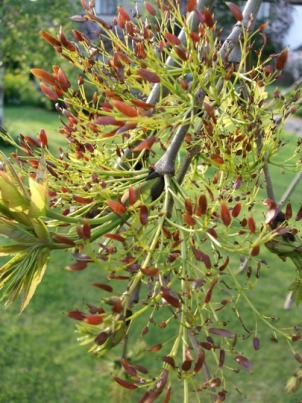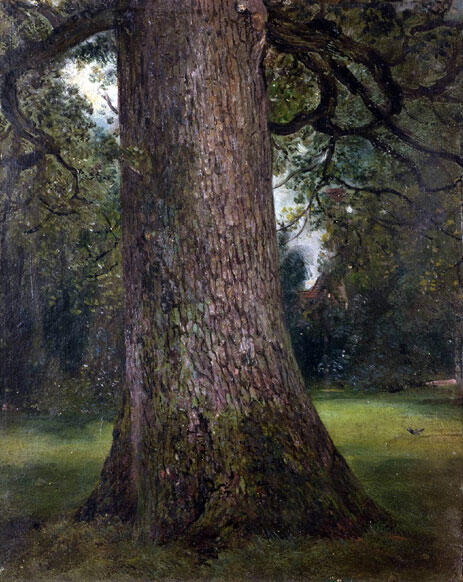Ash Dieback: Season Two
 Tuesday 23rd April. Cold sea, warm sun. Morning mist takes a while to clear, down here by the seaside, but when it burns off the skies are blue, the afternoons pleasant enough for people in the street to shed layers. The meal worms vanish swiftly, the goldfinches flirt about, and the blackbirds sing and sing. My tadpoles are doing well.
Tuesday 23rd April. Cold sea, warm sun. Morning mist takes a while to clear, down here by the seaside, but when it burns off the skies are blue, the afternoons pleasant enough for people in the street to shed layers. The meal worms vanish swiftly, the goldfinches flirt about, and the blackbirds sing and sing. My tadpoles are doing well. Spring at last, and the waiting is over, the seeing has begun. What's going to happen to the ash trees? Will they be gone in a decade, devastating our landscape?
Over the winter the defra scorecard has shown a steady increase in infected sites (484 currently): but outside East Anglia these sites are still, almost without exception, infected new plantings, ie, nursery reared saplings imported from infected countries in continental Europe, or else (which is the way the Woodland Trust got caught out) seedlings from the UK, exported to continental European nurseries; infected while reared there and then imported back here). How are things going to change, when the buds begin to break? Maybe not at all. Maybe chalara fraxinea doesn't actually spread like wildfire over here? Maybe the infection hits resistance as soon as it leaves East Anglia? Or some other kind of obstacle? Or maybe, and more likely, alas, the defra survey is just very limited... I have no idea.
I was reminded, up in Cumbria, how important these trees are to me. The lovely wayward growth of their branches in winter, their place in folklore (ash will be late this year, held back by the long, cold winter). Those iconic black buds, and the individual trees that have become part of my psychological landscape. I wish there was something I could do. A few weeks ago I asked the Sussex Wildlife Trust what plans they had for responding to the outbreak. Monitoring the ash woodlands on their reserves? Identifying and reported infections, and keeping an eye out for resistance? Maybe training volunteers to help with that task? Or with clearing away infected leaf litter, so the trees don't get re-infected? (It takes several doses of the fungus to overwhelm a tree of any size, & the spores lurk in fallen leaves) I got a cheerful "no not really! We just plan to let it happen" response. And the advice that, though it will be "frustrating" to watch so many trees die, I'd better get used to it. The same message is repeated in the latest SWT mailing to members. A little frustrating, indeed: but understandable, I suppose. There's an awful lot of ash trees in Sussex, especially in the West. In West Sussex, second most wooded county in England, holding 40% of our surviving ancient woodland, the dominant broad-leaved tree is ash, and they're all over the place, not neatly concentrated.
On the other hand, information is power, or sometimes consolation.
I was bemused at first by news that the Forestry Commission plan to combat chalara involved planting 250,000 young ash trees. What's the use of that? They'll just die! But the saplings are to be planted in East Anglia, native stock, genetically diverse, they will be exposed to infection and hopefully some of them will prove resistant.
I've learned from other sources (actually, a Gardener's World article, which I take to be fairly trustworthy), that it's not a complete wipe-out. Young trees will certainly die if they get infected, and in months not years. Trees from 10-20 years old will probably succumb, a little more slowly. Trees from 20-40 yrs have a better chance of fighting off the infection, they will get sick, but survive for years. And "There is little evidence that mature trees, over 40 yrs old, will ever be overwhelmed by the disease alone..."
So that's good news. With the caveat that a tree struggling with a serious fungal infection is far more vulnerable to other pests and trauma.
Anyway, here's what the National Trust has to say:
http://www.nationaltrust.org.uk/article-1355776163480/
& here's a report from Plant Science
http://www.plantsci.org.uk/news/ash-dieback-research-funding-and-policy-news-3-april-2013
Coda:
In Cumbria a couple of weeks ago we met the larch tree killer, phytophthora ramorum, face to face: there's an infection in the Japanese Garden, Eskdale Green. But all the larches are on their way out, along with most of the mature conifers, no matter what. To be replaced by native woodland (leaving an awful Paschendale landscape of stumps in the meantime; it's not a pretty process) Ironic, huh? Wordsworth fulminated against those larches, but by my time they were beautiful: vivid green in spring, red-gold in autumn, haunt of red squirrels, goldcrests; silence. . . It's natural, it's normal, all things must pass, pests will come and go, and occasionally we must expect a devastating disease (cf the Great Wine Blight): the "nature" we have made will recover, with help.
The threats just mustn't come too thick and fast, or our managed, anthropogenic "nature" will not change and move on. It will become degraded, impoverished and unrecognisable. Intervention needs to be stepped up, on every scale, to deal with the world we live in, not the "let nature take its course" world we may fondly remember.

 Monday 21st April, light rain overnight, followed by another fine day, chill breeze, honey sun, soft cloud. It is definitely Spring. As we walked up through Stanmer Park on Friday evening, bud-break was all around us in the young trees, including the threatened ash, and looking richer than in other years; and while we were eating at Stanmer Pub, a bat flitted over the cricket lawn outside, in the calm evening.
Monday 21st April, light rain overnight, followed by another fine day, chill breeze, honey sun, soft cloud. It is definitely Spring. As we walked up through Stanmer Park on Friday evening, bud-break was all around us in the young trees, including the threatened ash, and looking richer than in other years; and while we were eating at Stanmer Pub, a bat flitted over the cricket lawn outside, in the calm evening.